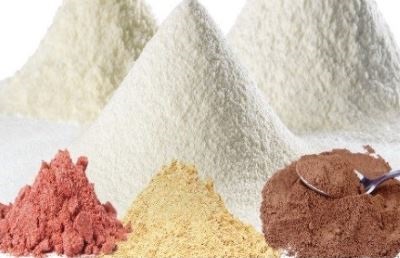Powder flow is important in many different aspects of the bulk handling industry. One can distinguish between unconfined powder flow and confined powder flow.
The latter confined powder flow is typical for storage in larger bulk quantities such as in big bags or in silos and hoppers. For studying powder flow and storage in big bags, we employ uni-axial compact strength testing, described on a separate web page. For powder flow in hoppers and silos, these flow properties are investigated by means of e.g. shear testing, employing different loads on the powder material.
In case of unconfined powder flow analysis, powders can be measured by flow through orifice or by means of the Hosokawa powder tester. In case of the Hosokawa powder tester, the powder flowability is characterized by seven mechanical measurements and three supporting measurements. This provides a numerical evaluation of the characteristics of a powder by determining the flowability and floodability at the transition points when transferred from a static to a dynamic state. The measured values are assigned to indices based on standardized analysis of about 3000 different bulk materials by R.L. Carr.
The Angle of repose measurement characterizes the flowability in relation to the cohesivness of a material. Compressibility testing indicates the difference between the aerated and the packed density of material; low compression indicates a good flowability. Angle of spatula relates to the relative angle of internal friction of the bulk powder. The Angle of fall alters the angle of gradient of the cone or heap of material by applying vibration. Dispersibility represents the sum of fugacity, dusting and flushing characteristics of the powder. Angle of difference is the difference between the angle of repose and the angle of fall, a large value indicates that the material has the characteristics of flushing. Supporting measurements are Aerated bulk density, Packed bulk density, and Uniformity. Combing all the results provides indices on powder flowability and powder floodabiltiy.
A powder flow methodology recently developed is based on a powder rheometer where the friction in a powder bed is measured and correlated with the powder flow properties. These powder flow measurements can be executed in an unconfined fixed bed, in a fluidized bed, and even under confined conditions similar to shear testing.

- Powder Flow and Ring Shear Testing
- Unconfined powder flow testing
- Powder Caking by Uni-axial compact strength testing
- Powder stickiness measurement
- Heubach and EN 15051 dustiness analysis
- Attrition and abrasion of particles, granules and tablets
- Segregation testing of powders and solids
- EN 17199-4 Dustiness index and nano particles



